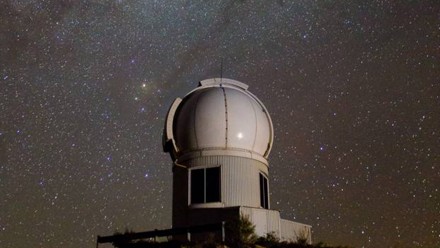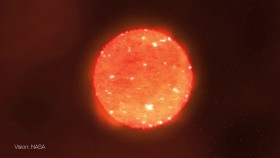RSAA wins funding for two Future Fellowships
The Australian National University will continue to lead the country in academic research after the Australian Research Council (ARC) announced the University has won 16 prized Future Fellowships. The Research School of Astronomy and Astrophysics won two of these Fellowships; one to RSAA's Dr David Yong to study the evolution of our own Galaxy, and the second to Dr Brent Groves from the Max Planck Institute for Astronomy to analyse the rate of star formation in distant galaxies.
The ARC Future Fellowships scheme provides funding for areas of critical national importance by supporting outstanding mid-career researchers.
ANU Deputy Vice-Chancellor (Research), Professor Margaret Harding, congratulated the Future Fellows and said the announcement was an outstanding result for the University.
“We are very proud of these researchers,” Professor Harding said.
“These 16 Fellows will further contribute to the high quality research environment at ANU. In particular, we will be welcoming five impressive international researchers to undertake their projects here,” she said.
The grants will provide research funding for five years from 2014.
DETAILS OF THE RSAA FELLOWSHIPS
Dr Brent Groves
Over the last 10 billion years the star formation rate in galaxies has been decreasing. Yet it is not known whether this is driven by a decline in the accretion of the gas that forms stars or stronger stellar feedback-driven gas outflows. The gradient in elemental abundances with galactic radius can constrain these two processes. The project aims to calibrate the measurement of this quantity using nearby galaxies, and measure the gradients in a low redshift sample of galaxies using Australian telescopes. These will be compared with theoretical models to determine the process that is driving the Universe to be more quiescent over cosmic time.
Dr David Yong
How did the Milky Way Galaxy form? The answer to this fundamental question lies in the chemical compositions of stars. Enormous investments by the Australian and international community into state-of-the-art facilities and surveys will yield a 1 million star sample for chemical analysis. To fully harvest the information from those surveys requires stellar chemical composition measurements of the highest possible precision. This project aims to use recently pioneered analysis techniques that have led the field of chemical abundance measurements in stars to the unprecedented precision level of 2 per cent (a five-fold improvement) to chart the evolution of our Galaxy over cosmic time.
For a full list of the Future Fellowships awarded to ANU, please see the ANU Newsroom article.












